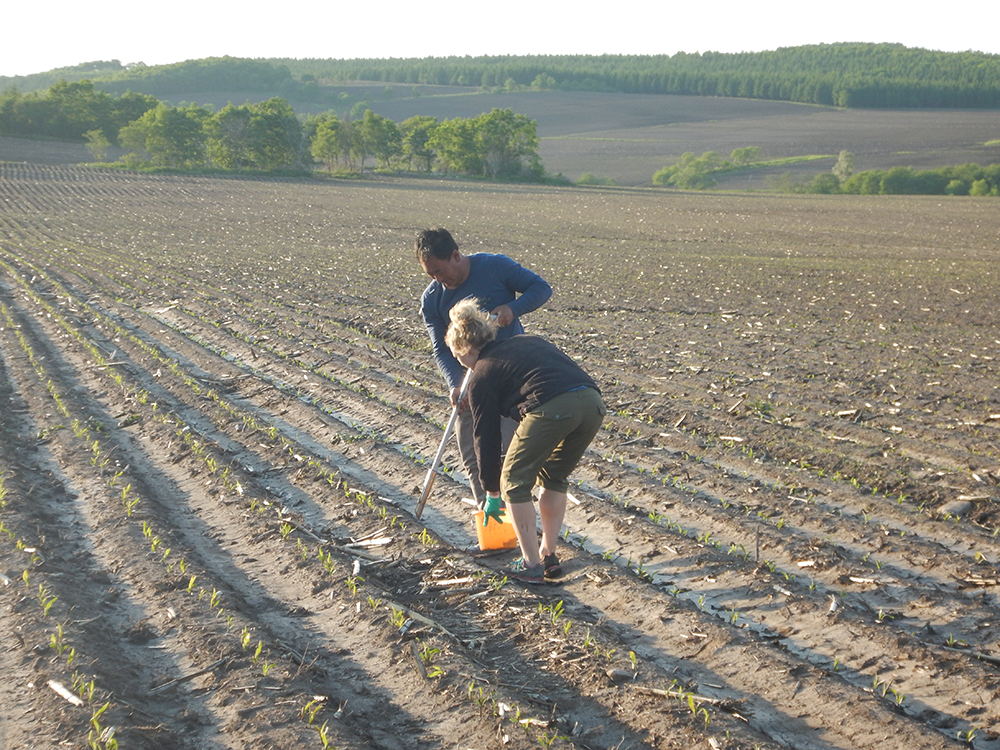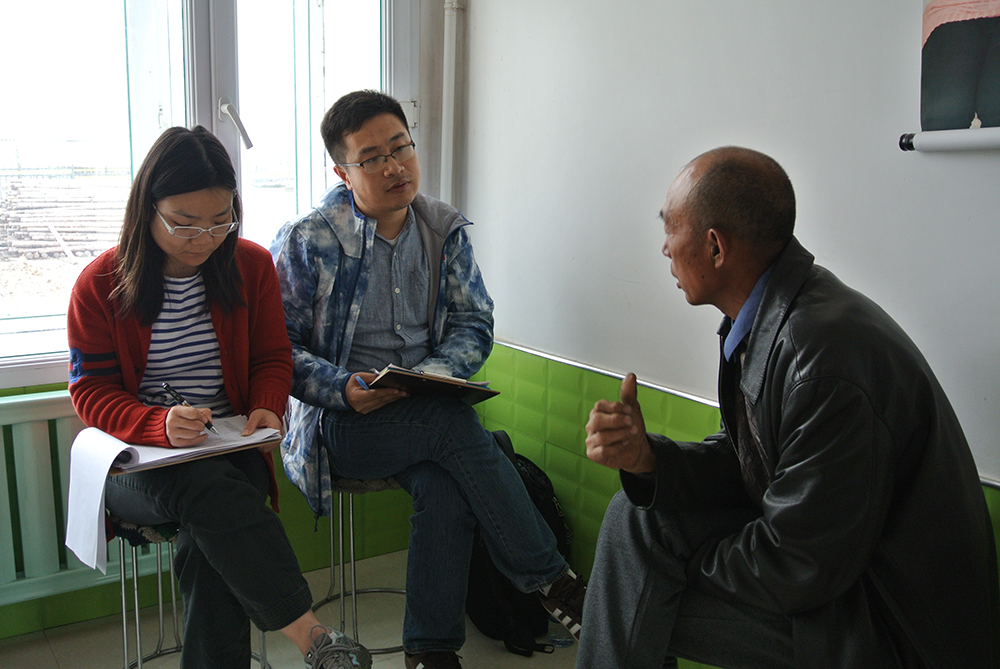China Field Work
In the summer of 2016, our research team traveled to China’s leading soybean production area, Heilongjiang Province. Working with local government officials and extension agents, we traveled to 63 randomly selected villages across the province and interviewed roughly 20 farmers per village.

The interviews covered questions on farm livelihood and management as well as the impact of international trade on farm operations. From the initial 20 interviews, five farmers were randomly selected for soil sampling. A surveyor would ask a farmer if we could take a soil sample at the end of the interview and the farmer would then take us to his plot to identify the boundaries. The field boundary was marked with flags before six soil cores were collected from the root-influenced soil (layer where the majority of crop roots are located) and mixed to generate one composite sample per field.
After collecting 254 soil samples (117 corn, 93 soybean and 44 rice samples), soil pH, percent organic matter and soil texture were measured and DNA isolated were extracted.




 Print
Print Email
Email